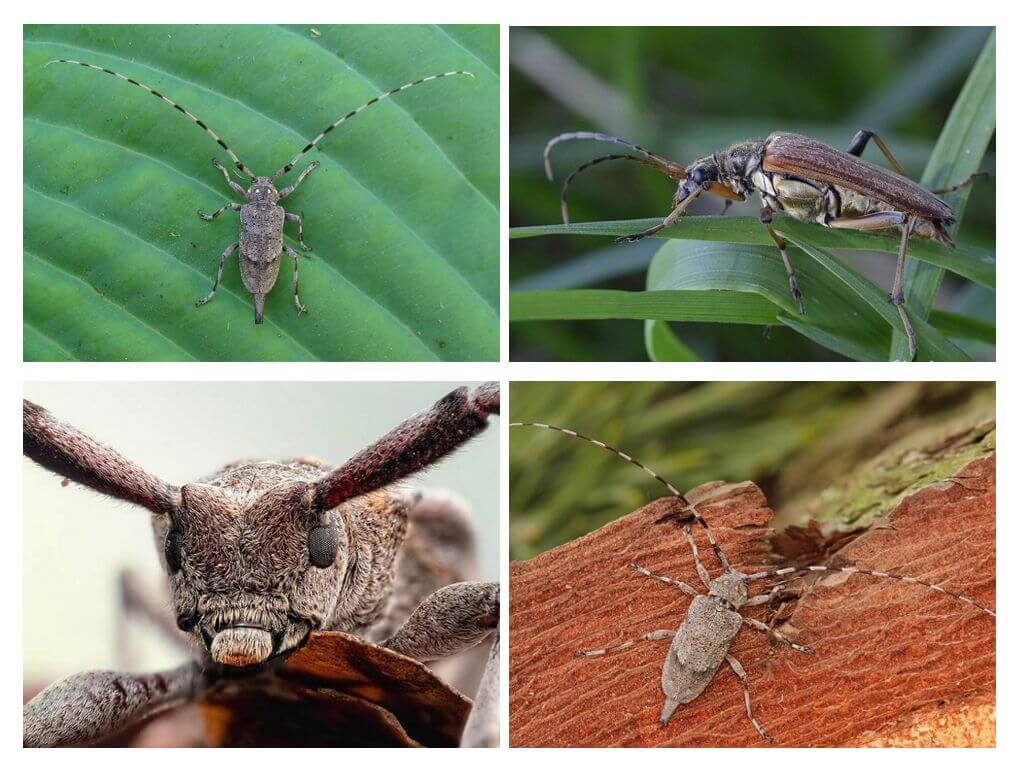Beetle long-nosed gray barbel
The long-necked gray barbel is a beetle that lives in pine forests. Spruce, fir and deciduous trees can also be his refuge. Beetle beetle can be found almost everywhere in the territory of the former USSR, in the countries of Central and Eastern Europe.On a note!
This long-tailed coleoptera does not cause damage to humans, as it does not apply to tree pests. After all, the long-necked gray barbel settles and damages only fallen trees and rotting trees. This in turn contributes to the acceleration of the transformation of wood into humus.
It does not harm the felled wood, as it affects only the space under the bark. A gray barbel fills it with sawdust, which makes it impossible for other insects to settle in the wood and damage it.
Description
The long-beetle gray beetle beetle is a flat, light-gray color insect, the length of which does not exceed 2 cm. The granular surface of the elytra has two narrow dark bands. Because of them, the female has a long ovipositor. The insect's mustache is much longer than the body size: in females 1.5 times, in males 4-5 times. They have a hair coat that has a white-gray color. On the pronotum there are 4 dark spots.
Breeding
Long-haired gray barbel mates, usually from May to August. After that, females lay light yellow elongated eggs in dying or already dead trees.
On a note!
One female can lay up to fifty eggs.
After a time, legless, slightly flattened larvae appear from them, the length of which reaches 3.5 cm. Throughout their life, they are occupied by the fact that, eating the cambial part of the cortex, they lay winding paths in it.
When the development of the larvae ends, it deepens into the tree layers, where at the end of the hooked course it turns into a pupa. The development process takes from 1 to 2 years.The emergence of adult individuals into the world proceeds from the beginning of spring, takes all summer and captures September.
Whom the beetle is afraid of
The natural enemies of this beetle are not only birds. They also include predatory and parasitic insects, sometimes even microorganisms.






